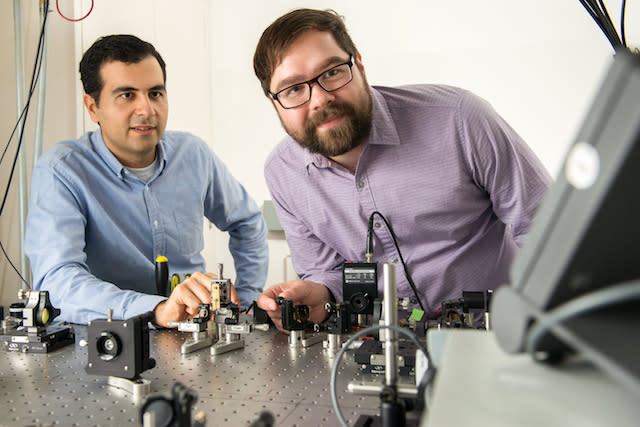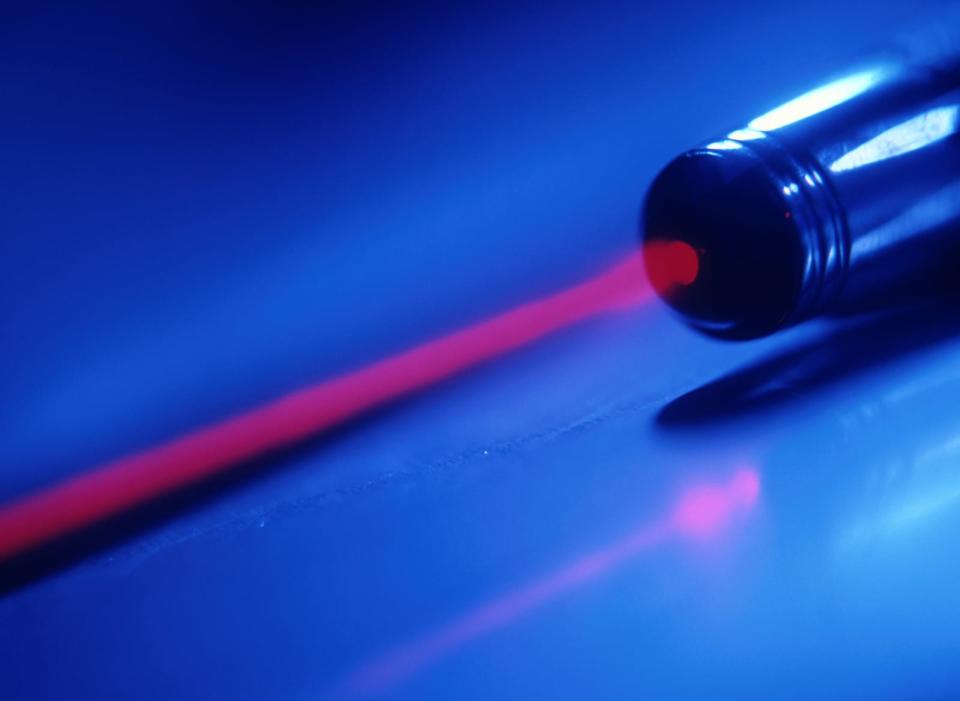New laser technology could improve how scientists study molecules
Researchers found a more efficient way to generate ultra-short bursts of light.
We use lasers for a lot of things, from cutting metal to improving eyesight, but lasers have their limitations. One major holdup is that they can only emit certain types of light. Researchers have gotten around this particular limitation by using what are known as optical parametric oscillators, which allow regular laser light to be converted into other wavelengths of light that may be useful for certain areas of research. One example is studying how molecules behave. However, these gadgets have their limitations too. They typically have weak outputs and they require extreme stability and precision, making them hard to use outside of highly controlled lab environments. But researchers at Stanford may have found a way around this issue and their work could make these systems more efficient and easier to use.
Here's how these oscillators work. Laser light is filtered through a crystal, which converts that light into those other wavelengths that researchers need. That light is then reflected off of a series of mirrors, which results in ultra-short bursts of light in a new wavelength. With traditional setups, the output of that converted light is pretty low, but with two tweaks to the system, the Stanford team was able to bump it up. Making the mirrors less reflective -- a counterintuitive move -- and making the light take longer to reflect off of all of those mirrors gave the researchers access to even more wavelengths, which means scientists can get ever more detailed looks at molecules.

This new system is more efficient than others and could be better suited to analyzing the behavior of and detecting molecules. For example, in the future, such a system could potentially be able to scan the air to detect pollutants. And because this system isn't as sensitive to movement, it stands to be useful outside of the lab. "You talk with people who have worked with this technology for the past 50 years and they are very skeptical about its real-life applications because they think of these resonators as a very high-finesse arrangement that is hard to align and requires a lot of upkeep," Alireza Marandi, one of the researchers on the project, said in a statement. "But in this regime of operation these requirements are super relaxed, and the source is super reliable and doesn't need the extensive care required by standard systems." Marc Jankowski, another researcher on the team, said, "We've worked on these sources for years and now we've gotten some clues that will really help bring them out of the lab and into the world."
The work was recently published in Physical Review Letters.




